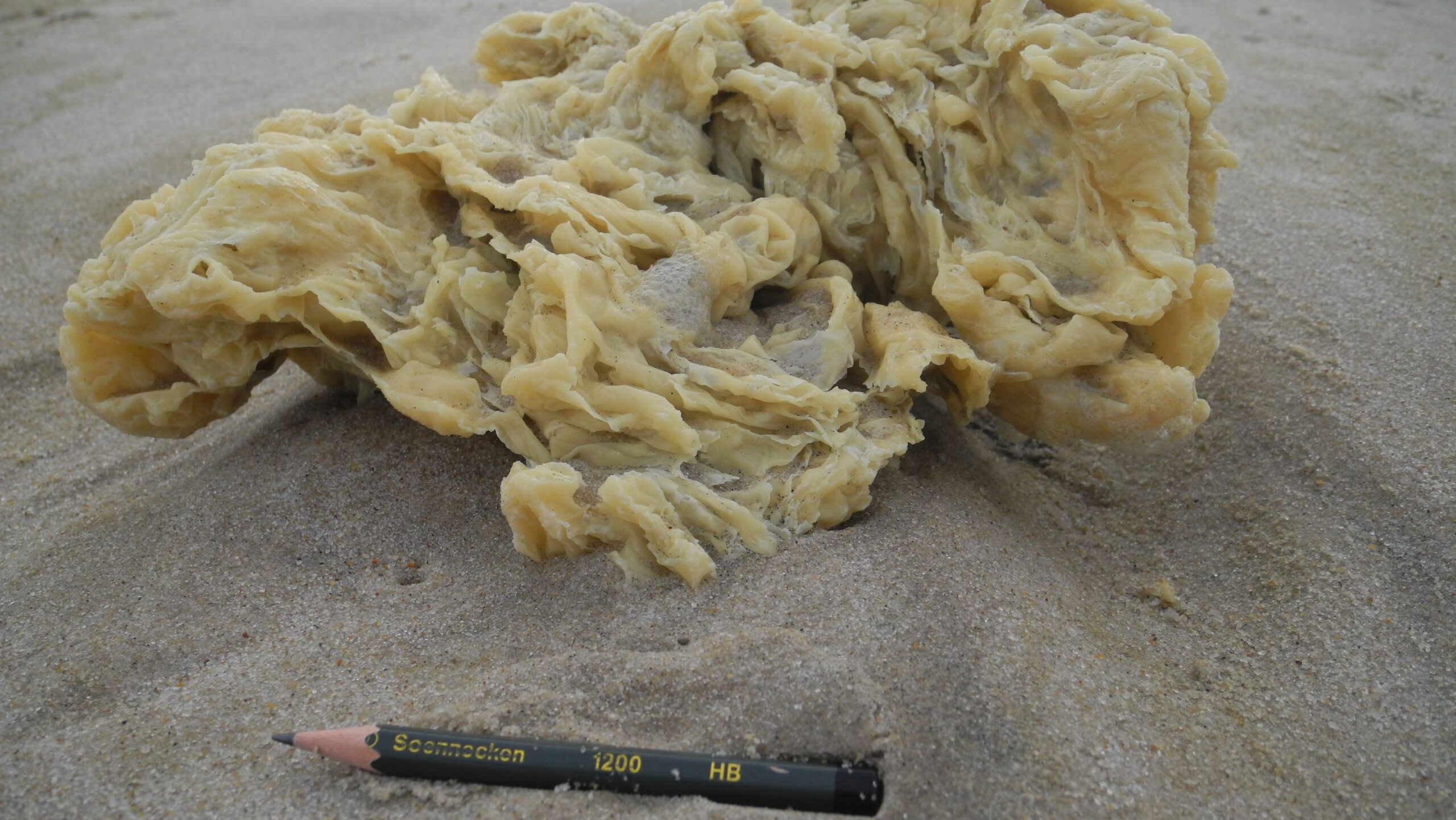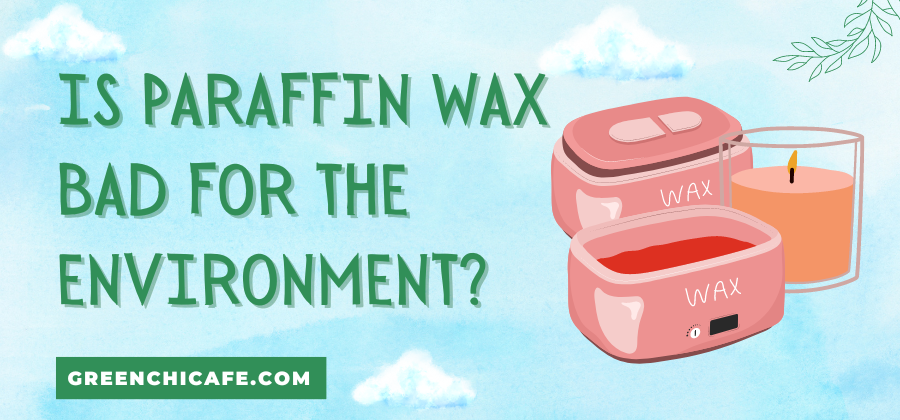While paraffin wax itself is chemically inert, its production and use can negatively impact air quality and human health.
However, it remains popular as a cheap byproduct of petroleum refining.
Read on to learn more about the environmental concerns around paraffin wax.
Is Paraffin Wax Bad for the Environment?

While paraffin wax itself is relatively inert, its manufacture releases concerning air pollutants.
Burning paraffin candles also emit toxins.
And petroleum extraction for crude oil disrupts marine ecosystems.
However, paraffin’s overall environmental footprint versus alternatives requires more lifecycle analyses.
Key Points
- Producing and refining paraffin wax emits hazardous air pollutants like benzene
- Burning candles releases toxins like toluene into indoor air
- Petroleum drilling used for source crude oil harms marine habitats
- Paraffin wax is not readily biodegradable in most environments
How Does Paraffin Wax Production Impact Air Quality?

The production process to extract and refine paraffin wax releases concerning levels of air pollutants like sulfur dioxide, volatile organic compounds like benzene and toluene, and other toxic emissions.
Reports show that paraffin wax facilities in China exceeded safe emission levels by 4 to 8 times.
Benzene and toluene are hazardous air pollutants associated with increased cancer risk.
Paraffin production should implement proper pollution control measures.
But as a cheap byproduct, there is little incentive to invest in cleaner technologies.
Overall, more lifecycle analyses are needed.
Does Burning Paraffin Candles Contaminate Indoor Air?
Yes, studies show that paraffin candles release concerning levels of benzene and toluene into indoor air when burned.
These compounds are known human carcinogens and long-term exposure could increase cancer risk.
However, paraffin candles emit far less benzene compared to sources like secondhand smoke.
While paraffin candle emissions are not acutely toxic, sensitive individuals should take precautions.
Soot deposits can also dirty surfaces.
Further study on emission exposure levels is still needed.
Is Paraffin Wax Sustainable Since It’s a byproduct of Petroleum?
While paraffin wax makes use of a byproduct, the petroleum industry itself is unsustainable.
Extraction damages environments relies on a nonrenewable resource, and contributes to climate change.
However, the relative impact of wax versus fuel production is unclear.
Debates continue over whether utilizing byproducts offsets the impacts of petroleum extraction, or simply enables more oil production.
Currently, paraffin wax’s sustainability compared to alternatives has not been thoroughly analyzed.
More lifecycle assessments incorporating the petroleum supply chain are needed.
How Does Drilling for Crude Oil Affect Marine Ecosystems?
Extraction activities like seismic blasting disrupt marine life.
Drill cuttings, drilling mud, and wastewater can pollute shorelines.
Oil spills severely harm regional ecosystems by poisoning animals, plants, and entire food chains.
Infrastructure dredging impacts sedimentation patterns.
Noise pollution stresses ocean life like whales over vast distances.
Rigs also serve as artificial reefs, altering local habitats.
While the Gulf of Mexico demonstrates ecosystem resilience, full recovery takes time.
Tighter regulations could limit damage from future offshore oil expansion keeping the aquatic environment healthy.
Are the Health Risks of Paraffin Wax Exposure Well-Studied?
No, the human health risks associated specifically with paraffin wax production and use have not been thoroughly examined.
Some occupational studies on paraffin exposure exist, but most focus on mineral oil mixtures, not pure paraffin wax.
More research is needed on wax facility emissions, indoor air impacts from candles, and toxicity data.
Cosmetics use also warrants study.
Currently, paraffin wax’s health risks are not conclusively characterized compared to materials like asbestos.
However, precautions are still recommended.
Could Switching to Green Energy Reduce Reliance on Paraffin?
Yes, transitioning to renewable energy sources like solar, wind, and geothermal could decrease dependence on petroleum products like paraffin wax.
Less demand for crude oil would reduce environmental pressures from drilling and associated extraction infrastructure.
However, paraffin’s low cost and wide industrial applications could make it one of the last petroleum streams to be phased out.
Sustainable alternatives for candles and cosmetics also need further development.
But overall, embracing green energy could eventually eliminate the need for petroleum-derived paraffin wax.
Is Paraffin Wax Environmentally Friendly?
Paraffin wax is not considered an environmentally friendly or sustainable product overall.
As a petroleum derivative, paraffin relies on crude oil drilling, which damages marine ecosystems and contributes to climate change through greenhouse gas emissions.
The refining process to extract paraffin wax also releases concerning levels of air pollutants.
While paraffin itself is non-toxic, its lifecycle has not been thoroughly analyzed for environmental impacts.
And as an inexpensive byproduct, there is little incentive to develop cleaner production technologies.
However, some argue paraffin’s use offsets drilling impacts by utilizing waste streams.
But more lifecycle assessments incorporating petroleum extraction are needed to quantify paraffin’s sustainability compared to alternatives.
At this time, other waxes like beeswax could be considered more eco-friendly.
Which Wax Is Most Environmentally Friendly?
Beeswax and soy wax are considered the most eco-friendly waxes.
Beeswax is a renewable, biodegradable product made sustainably by honey bees.
No pesticides or other chemicals are used. Soy wax derives from soybean oil, an annually renewable crop.
It is biodegradable and non-toxic.
Paraffin wax, in contrast, is a petroleum derivative, relying on non-renewable crude oil.
Petroleum extraction damages the environment and contributes to climate change.
The manufacturing process also emits hazardous air pollutants.
However, more comparative lifecycle analyses of waxes are needed.
Recycled paraffin is likely more sustainable than new production.
But overall, beeswax and soy wax edge out paraffin in environmental friendliness.
How Long Does It Take for Paraffin Wax to Biodegrade?
Pure paraffin wax does not biodegrade easily or quickly in most environments.
Studies show it persists in soils with little decomposition over extended periods.
UV light contributes to some breakdowns on surfaces.
Additives and impurities may biodegrade faster.
In landfills, paraffin wax biodegradation depends on moisture, temperature, and soil microbes.
One study found 5% biodegradation of paraffin in landfill conditions after 1 year.
It estimated 5-10 year timeframes for significant biodegradation.
Overall, timeframes likely range from multiple years to decades for a complete breakdown.
In contrast, waxes like beeswax biodegrade more readily.
More research is still needed on factors influencing paraffin wax biodegradation rates in different environments.
What Is the Problem with Paraffin Wax?
There are several potential problems with paraffin wax from an environmental standpoint:
Extraction of the crude oil used to make paraffin can damage marine ecosystems.
Refining processes release hazardous air pollutants like benzene, causing air quality issues.
Burning paraffin candles emits toxic compounds like toluene into indoor air.
Paraffin production and use relies on non-renewable fossil fuels.
Paraffin wax is non-biodegradable and persists in the environment.
Health risks associated with production and use have not been well-studied.
Cheap cost means little incentive to develop cleaner production technologies.
While paraffin itself has low toxicity, its overall environmental footprint needs further analysis.
Concerns exist across its production, use, and disposal. More sustainable alternatives are available.
Key Takeaways:
- While paraffin wax itself is relatively inert, its production process and petroleum origins raise environmental and health concerns that warrant further study.
- More lifecycle and toxicity assessments are needed to better understand paraffin’s impacts across its production, use, and disposal.
Frequently Asked Questions
Can paraffin wax be reused?
Yes, paraffin wax can be reused. Melting and re-pouring leftover wax is common practice among candle makers. Reusing paraffin wax also gives it additional life, reducing its environmental footprint.
Is paraffin wax toxic to humans?
In its pure form, paraffin wax is considered non-toxic to humans. However, some solvents used in production may persist. Inhaling candle fumes can irritate the lungs. More research is still needed on human health impacts from production, use, and disposal.
Does paraffin wax contain asbestos?
Industrial-grade paraffin wax is highly purified, containing zero asbestos. Cosmetic-grade paraffin wax also should not contain asbestos under FDA regulations. However, improper refining techniques could potentially lead to contamination. Reputable suppliers assure that medical-grade paraffin is asbestos-free.
Can paraffin wax be composted?
No, paraffin wax cannot be composted. It is not a biodegradable material suitable for most home or industrial composting systems. Paraffin persists in the environment for years and requires specific conditions to slowly decompose in landfills. Reusing or recycling excess wax is a better option.
GreenChiCafe is passionate about the environment and our natural world.
Be sure to check out our website for more great content on important ecological topics.
